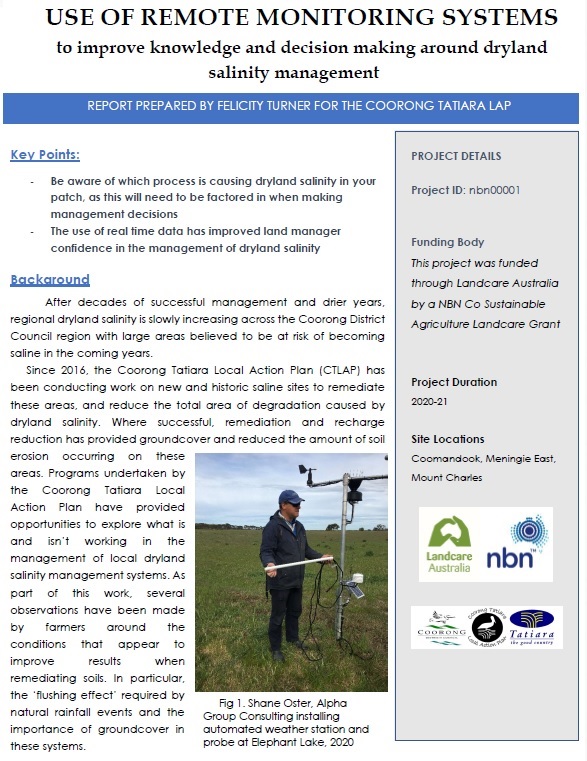NEW Dryland Salinity Now Fact Sheet Series
NEW DRYLAND SALINITY NOW - FACT SHEET SERIES
Through the Responding to Dryland Salinity Project funded by the National Landcare Program, Coorong Tatiara Local Action Plan has reviewed historical salinity information and merged it with new salinity, soil mapping & remote monitoring systems data.
This fact sheet provides land managers managing dryland salinity relevant information relevant to current land uses and management practices.
AGRONOMIC OPTIONS
Several Annual Legumes (Clover and Medic species) have low to moderate levels of salinity tolerance and can be utilised in salt tolerant pasture mixes in different situations. Click below to access the Annual Legumes Fact Sheet.
Annual Legumes Fact Sheet
Nitro Persian Clover on the mid slope Annual Legume Tolerances to Salinity and Waterlogging
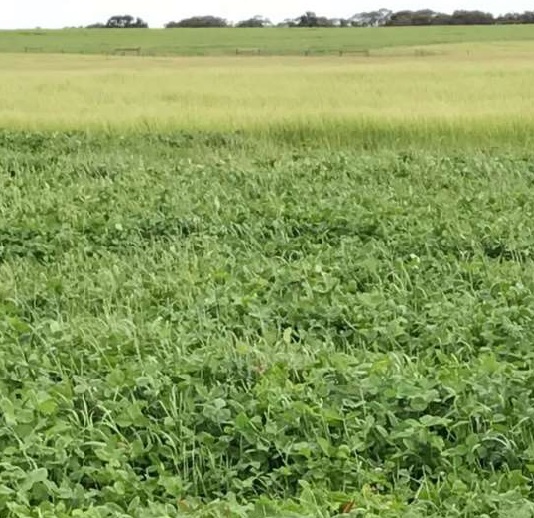
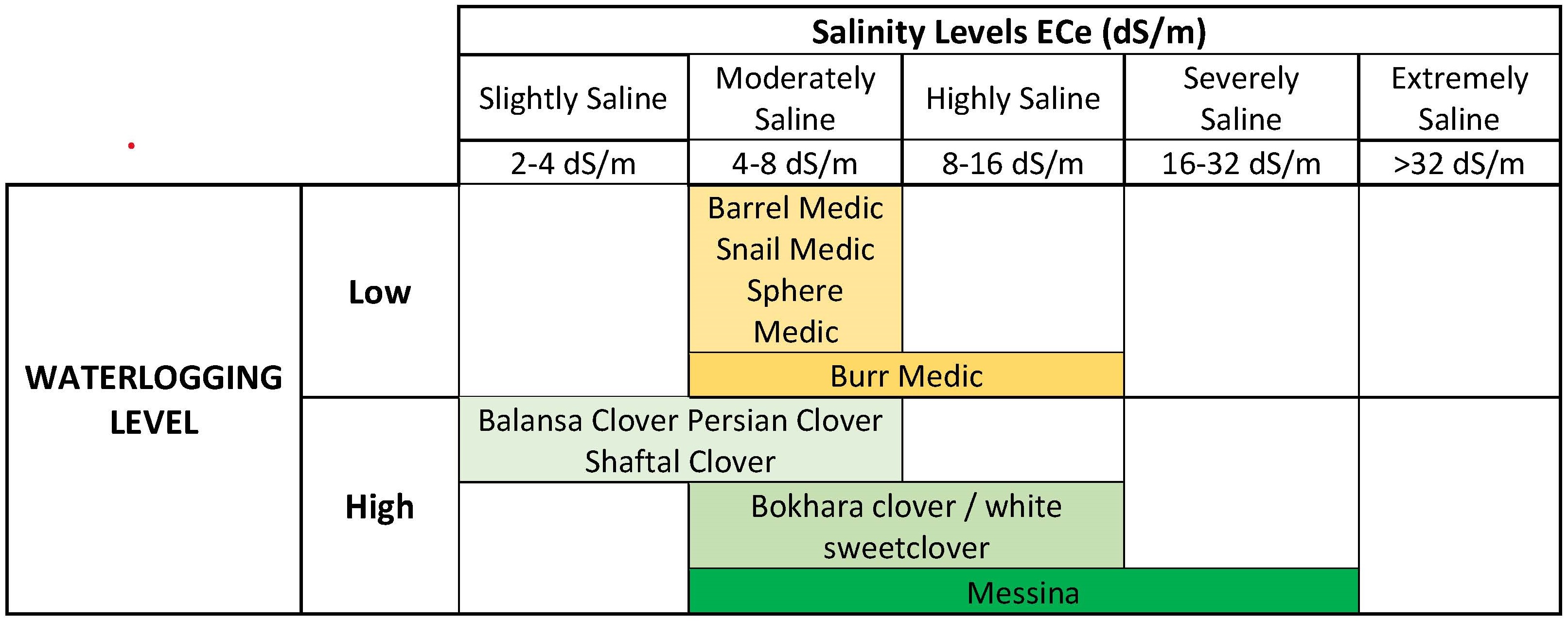
Messina (Melilotus siculis) is an annual legume that is adapted to winter waterlogging and has moderate salinity tolerance (ECe 8-
30). It is best utilised in grazing systems as part of a saltland pasture mix where the additional benefits of nitrogen fixation can be
utilised. Click below to access the Messina Fact Sheet.
Seedling Messina Site suitability indicators for Messina
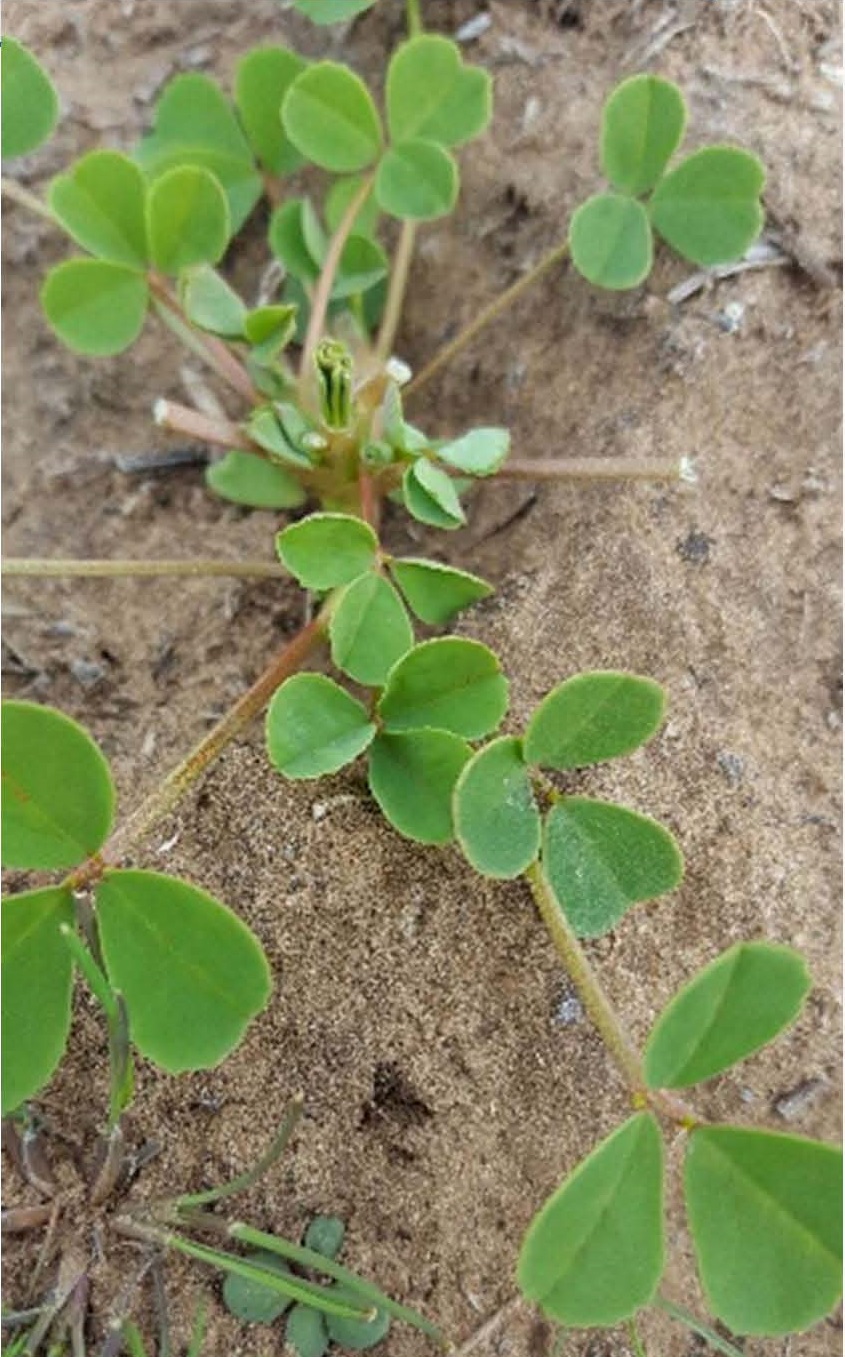
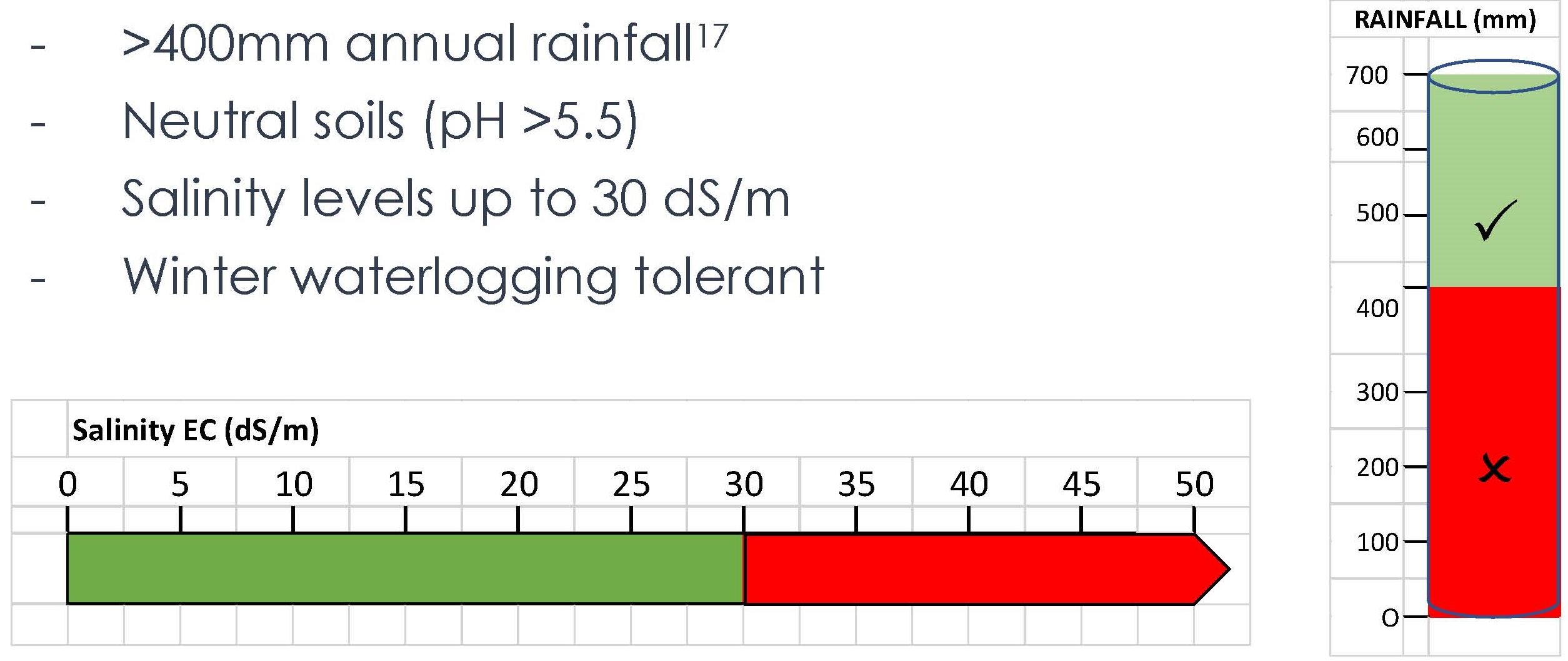
Puccinellia (Puccinellia ciliata) is a perennial grass that is tolerant to both salinity and transient waterlogging (inundation <4 weeks). It is dormant in summer with maximum dry matter production in late winter and spring. It has shown its ability to be useful in remediation of scalds, and its palatability makes it well suited to grazing systems in the Upper SE providing the areas is managed appropriately. Click below to access the Puccinellia Fact Sheet.
Puccinellia seed heads Site suitability indicators for Puccinellia
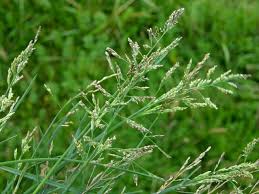
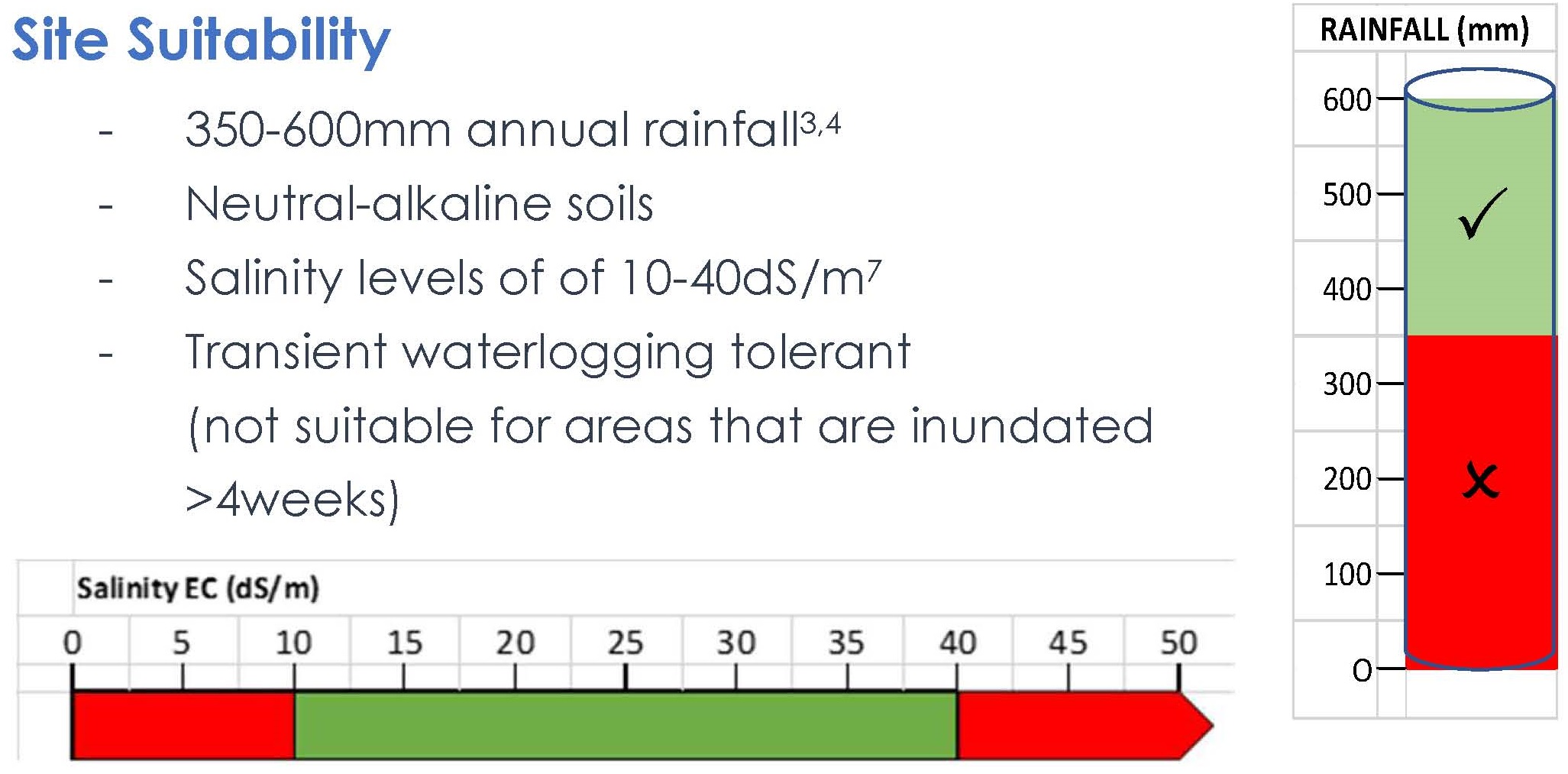
Tall Wheat Grass (Thinopyrum ponticum) is a drought tolerant, summer active, tussock forming perennial that persists in soils that
are waterlogged in winter and dry out during summer. It is best suited for areas that are going to be grazed to ensure that it doesn’t become unmanageable and spread unintentionally. Click below to access the Tall Wheat Grass Fact Sheet.
Tall Wheat Grass - Northern Outlet Drain Site suitability indicators for Tall Wheat Grass
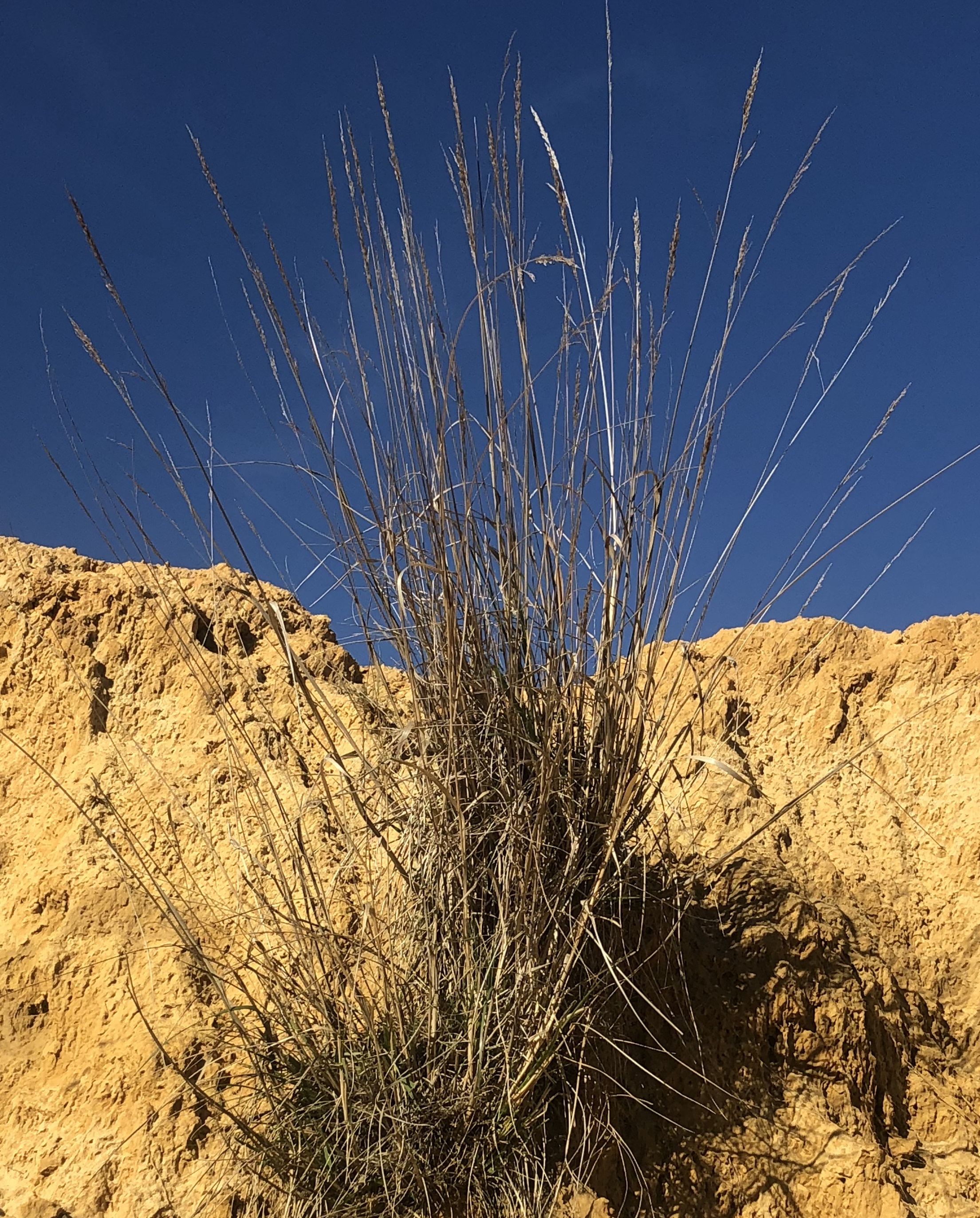
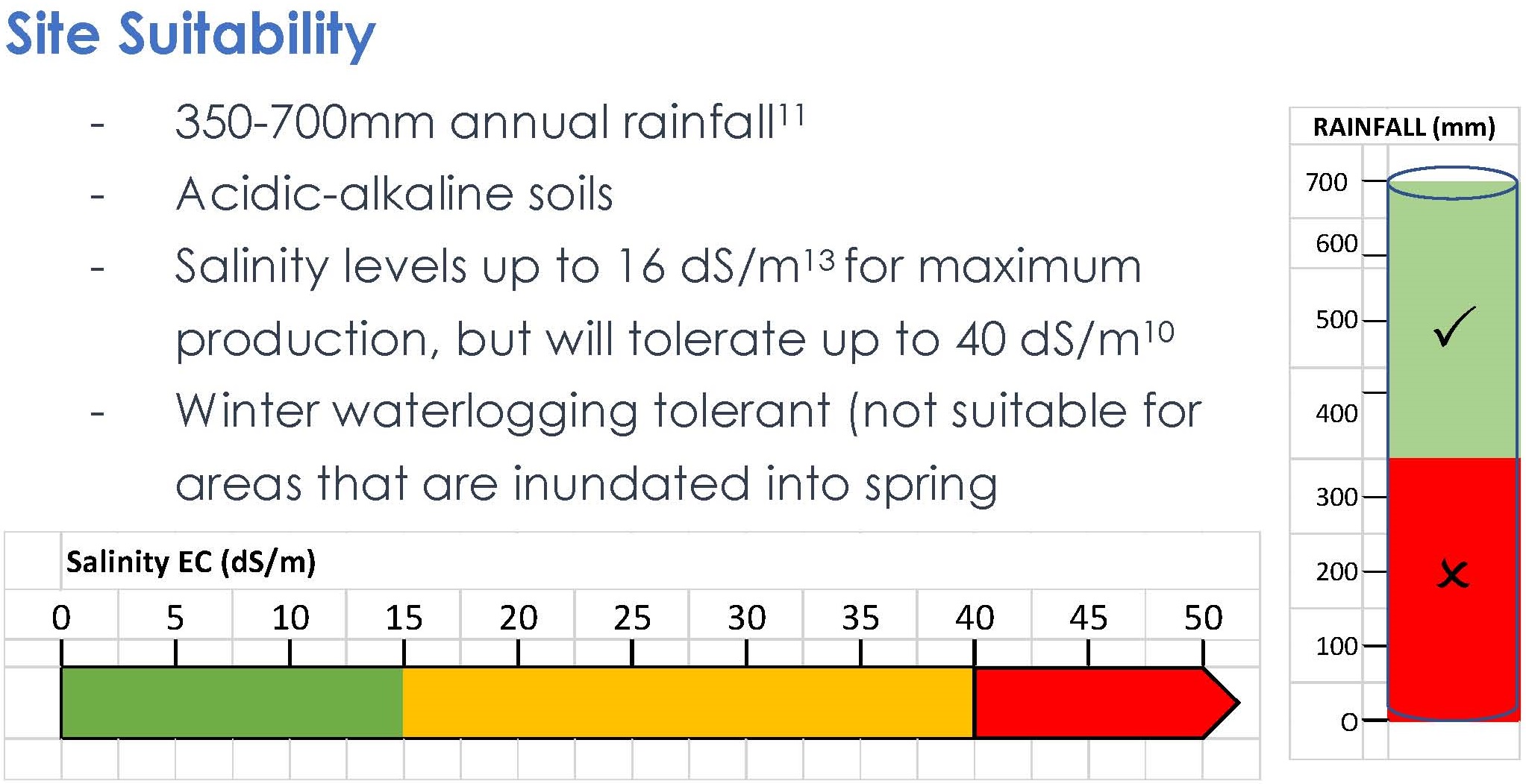
MANAGEMENT RECOMMENDATIONS & REMOTE MONITORING SYSTEMS
Since 2016, the Coorong District Council area has seen a growing increase in areas affected by dryland salinity. In response to this, the Coorong Tatiara Local Action Plan (CTLAP) have been working with farmers and industry across the region to further understand the issues and develop solutions to assist farmers in managing areas of dryland salinity; both in the areas of remediation of scalds, identifying ‘at risk areas’ and prevention of new scalds forming. The following recommendations have been developed as part of this process. Further information is available on each of these recommendations as part of the Dryland Salinity NOW package.
Please click on the link below to access the Dryland Salinity Management Recommendations Fact Sheet
Dryland Salinity Management Recommendations Fact Sheet
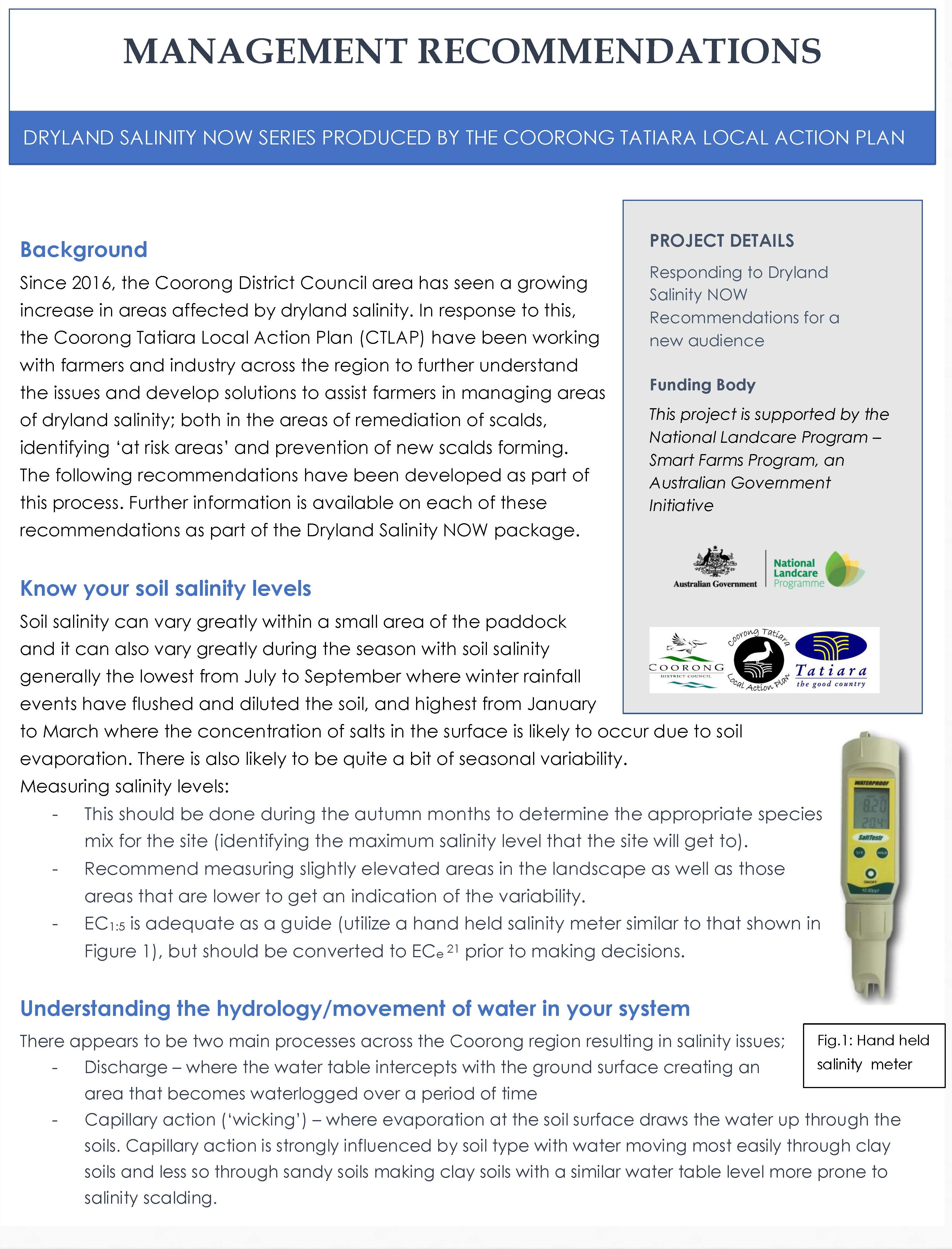
Programs undertaken by the Coorong Tatiara Local Action Plan have provided opportunities to explore what is and isn’t working in the management of local dryland salinity management systems. As part of this work, several observations have been made by farmers around the conditions that appear to improve results when remediating soils. In particular, the ‘flushing effect’ required by natural rainfall events and the importance of groundcover in these systems.
The opportunity arose to utilise automated monitoring equipment to test these observations by using automated monitoring equipment to measure the depth of the water table, soil moisture levels, soil salinity levels and environmental conditions in real time at three monitoring sites across the Coorong and Tatiara District Council regions. This data is updated via automated telemetry every 15 minutes and both real time and historical data can be viewed utilising the internet. Initial findings from the information being generated suggest that there are two very different dryland salinity processes that are occurring across the region
For more information on the use of Remote Monitoring Systems to Manage Dryland Salinity please click on the fact sheet below.
Use of Remote Monitoring Systems to Manage Dryland Salinity Fact Sheet
